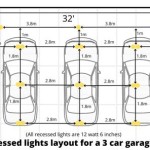How To Pour A Concrete Garage Floor
Pouring a concrete garage floor involves several crucial steps, from meticulous planning and site preparation to the final finishing touches. A well-executed concrete floor provides a durable, level surface for vehicles, storage, and workspaces.
Planning and Preparation
Before any concrete is mixed, careful planning and preparation are necessary. This includes accurately calculating the amount of concrete needed based on the dimensions of the garage, considering drainage requirements, and gathering the necessary tools and materials. Obtaining the correct permits and ensuring compliance with local building codes are also essential steps in this initial phase.
Materials and Tools
The success of a concrete pour relies heavily on having the correct materials and tools readily available. Essential materials include concrete mix, gravel, sand, reinforcing mesh or fibers, form lumber, and vapor barrier. Necessary tools include a concrete mixer (or access to ready-mix concrete), shovels, rakes, screeds, bull floats, edgers, and finishing brooms.
Site Preparation and Formwork
Preparing the site involves excavating the area to the desired depth, ensuring a stable and compacted subbase of gravel. A well-compacted subbase prevents settling and cracking of the concrete slab. Formwork, constructed from sturdy lumber, is then erected to define the perimeter of the garage floor and contain the concrete during the pouring process. The formwork must be accurately leveled and braced to withstand the pressure of the wet concrete.
Vapor Barrier Installation
A crucial step in preventing moisture issues is installing a vapor barrier over the compacted gravel base. This typically consists of thick plastic sheeting, overlapped and sealed at the seams. The vapor barrier prevents moisture from migrating up through the concrete slab, which can cause problems like efflorescence and cracking.
Reinforcement
Reinforcing the concrete slab significantly enhances its strength and durability, reducing the risk of cracking. This can be achieved by placing welded wire mesh or synthetic fibers within the concrete before it sets. The reinforcement should be positioned in the middle of the slab thickness for optimal performance.
Pouring the Concrete
The concrete should ideally be poured in one continuous operation to ensure a monolithic slab. Whether using ready-mix concrete delivered by truck or mixing on-site, the concrete should be placed within the forms and spread evenly using shovels and rakes. Maintaining a consistent slump (workability) of the concrete is essential for proper placement and finishing.
Screeding and Leveling
Once the concrete is poured, the surface is leveled and smoothed using a screed. A screed is a long, straight board or metal tool used to remove excess concrete and create a level surface. The screeding process should be performed carefully to ensure uniformity across the entire slab.
Bull Floating and Edging
After screeding, a bull float is used to further smooth the surface and embed any aggregate particles. This process also helps to bring a thin layer of cement paste to the surface, which aids in the finishing process. Edging tools are then used to create rounded edges along the perimeter of the slab, preventing chipping and providing a more aesthetically pleasing finish.
Control Joints
Control joints are planned cracks created in the concrete slab to manage the inevitable shrinkage that occurs as the concrete cures. These joints help to prevent random cracking by providing predetermined weak points where the concrete can crack in a controlled manner. Control joints can be created using a groover tool or by sawing the concrete after it has partially hardened.
Finishing and Curing
The final finishing step typically involves using a broom to create a textured surface, improving traction. After finishing, the concrete must be cured properly to achieve its full strength and durability. Curing involves keeping the concrete moist for a specific period, typically seven days, by covering it with plastic sheeting or applying a curing compound. Proper curing is crucial for preventing premature drying and cracking.
Protecting the New Slab
Once the concrete has cured sufficiently, it's important to protect it from heavy traffic and potential damage. Avoid driving or parking heavy vehicles on the new slab for at least 28 days to allow the concrete to reach its full compressive strength. Consider applying a sealant to protect the concrete from stains and wear over time.

How To Pour A Concrete Floor For An Existing Garage Best Guide

How To Pour A Garage Floor 11 Steps With Pictures Wikihow

How To Pour A Concrete Garage Floor With Weather Lip

How To Pour A Concrete Slab Diy Family Handyman

How To Pour A Garage Floor 11 Steps With Pictures Wikihow

How To Pour A Concrete Floor For An Existing Garage Best Guide

How To Pour A Concrete Floor For An Existing Garage 32 X 24

Pneumatic Walk Behind Screed Pouring The Concrete Floor In Garage Project Small House Floors

How To Pour A Concrete Floor For An Existing Garage Best Guide

How To Pour A Garage Floor 11 Steps With Pictures Wikihow
Related Posts








